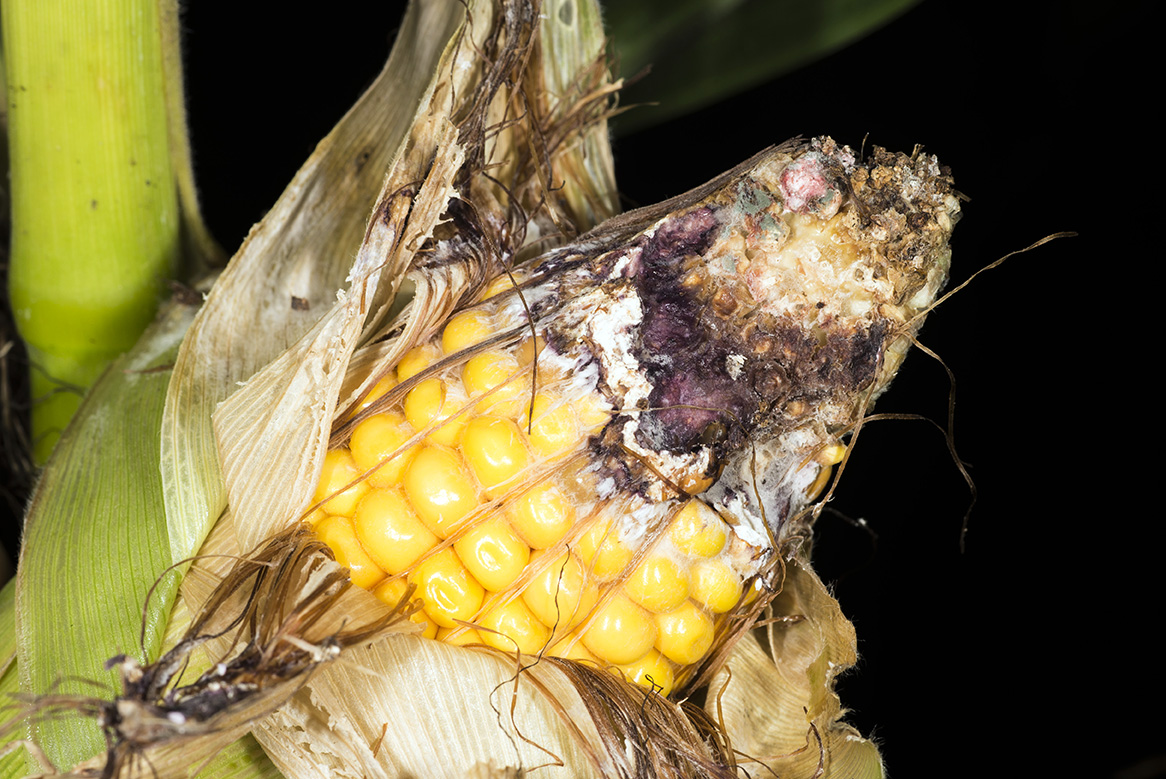It’s western bean cutworm season – as discussed in last week’s Pest&Crop, moth trap counts are peaking, primarily in Indiana’s northern counties. Control of this pest with Bt corn traits is difficult, as it has evolved resistance to one of the toxins present in most traited corn, Cry1F, the endotoxin for above-ground feeding caterpillars. This includes SmartStax varieties and Optimum AcreMax hybrids, among others. In terms of Bt hybrids, only those expressing the Vip protein will offer control of this pest – this is something to keep in mind when ordering seed for 2022. Other than that, field scouting and well-timed insecticide applications are your only options for WBC management, and those options do work well.

Losing kernels to western bean cutworm feeding is only a part of the story. (Photo Credit: John Obermeyer)
In areas where eggs are laid in abundance, some caterpillars will get through even the best-timed insecticide application. Although the direct damage the caterpillar causes by feeding is not insignificant, it is often the secondary concern. The real problems start because the damaged ear is predisposed to fungal pathogens that may lead to ear rots, e.g., Gibberella. The caterpillars don’t vector the pathogen directly, but they open up the ear/kernels and make the environment more favorable for potential disease development. These fungal diseases may produce toxins that are highly toxic to livestock (particularly swine) and elevated levels of these toxins can result in dockage at grain elevators. This highlights how important the next few days are for ramping up scouting efforts to correctly time insecticide applications when needed. This before they get into the safety of protected areas, the ear itself. Happy scouting!


